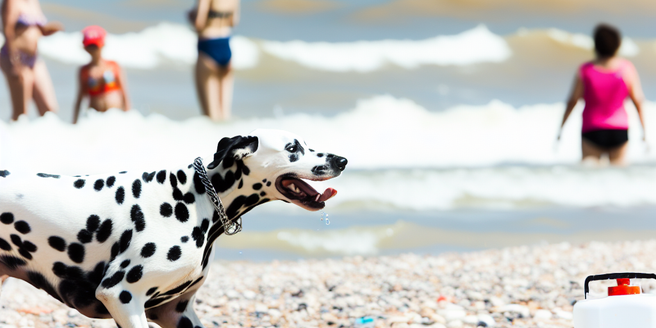
Understanding Your Dog’s Hydration Needs
Understanding your dog’s hydration needs is crucial for their overall health. A dog’s body is composed of approximately 60% water, making it essential for maintaining normal physiological functions. Proper hydration supports digestion, joints, and regulation of body temperature. Dogs lose water through various activities, including panting, urination, and physical exertion. To ensure your dog remains hydrated, it’s important to provide constant access to clean, fresh water throughout the day. Your dog’s activity level, size, and diet can influence how much water they need. As a general rule, dogs need one ounce of water per pound of body weight daily. Be aware of environmental factors, such as hot weather, which can increase water needs. Observe your pet’s drinking habits and adjust as needed to prevent dehydration and ensure optimal health.
Choosing the Right Water Bowl
Choosing the right water bowl for your dog goes beyond aesthetics; it’s about functionality and safety. Consider the material of the bowl first. Stainless steel and ceramic are excellent choices because they are durable and easy to clean, helping to prevent bacterial growth. Plastic bowls can harbor bacteria and may cause allergic reactions in some dogs. Size matters, too; ensure the bowl is large enough to hold sufficient water for your dog’s size and activity level. Non-slip bases are a practical feature, preventing spills during enthusiastic drinking. Additionally, elevated bowls can benefit larger breeds or older dogs with joint issues. Regular cleaning of the bowl is essential to ensure a consistent supply of fresh water, as residue or mold can form quickly, compromising the quality of the water your dog consumes.
Signs of Dehydration in Dogs
Recognizing the signs of dehydration in dogs is crucial to prevent health complications. Common indicators include dry gums, excessive panting, and lethargy. A simple test to check your dog’s hydration status is the skin elasticity test: gently pinch the skin at your dog’s scruff area, and if it doesn’t return to its original position immediately, dehydration may be present. Sunken eyes, loss of appetite, and thick saliva are other signs. Dehydration can result from inadequate water intake, excessive heat, or underlying health issues such as kidney problems or diabetes. Early detection and treatment are vital. Provide immediate access to clean water if you notice these symptoms, and monitor your dog’s condition closely. Severe dehydration requires professional veterinary care to prevent serious health risks, including organ damage and electrolyte imbalances.
Homemade Hydration Treats for Dogs
Creating homemade hydration treats for your dog is a fun and effective way to ensure they receive extra fluids, especially during warm months. These treats can be made with simple, dog-friendly ingredients that your pet loves. You can freeze low-sodium chicken or beef broth in ice cube trays for flavorful ice pops. For a fruitier option, blend watermelon, cantaloupe, or blueberries with water and pour the mixture into molds. These fruits are safe for dogs and hydrate them as they enjoy their treat. Always ensure that the ingredients are appropriate for dogs and avoid adding any sugar or artificial sweeteners. This DIY approach to hydration not only keeps your dog refreshed but also serves as a delightful bonding activity. Rotate different flavors to find your dog’s favorites and keep mealtime interesting.
When to Consult a Veterinarian
Knowing when to consult a veterinarian about your dog’s hydration is crucial for their safety and health. Regular monitoring of their drinking habits and recognizing signs of dehydration can often mitigate serious issues. However, persistent symptoms like vomiting, diarrhea, lethargy, and refusal to drink for over 24 hours warrant immediate veterinary attention. These signs may indicate underlying health problems such as kidney disease, diabetes, or infections that require professional diagnosis and treatment. Additionally, if your dog shows sudden changes in drinking patterns, either excessive thirst or reduced interest in water, it’s best to seek veterinary advice. Vets can run tests to rule out or confirm conditions affecting hydration levels, providing appropriate interventions. Early consultation prevents complications, ensuring your dog’s wellness and peace of mind for you as a pet owner.
